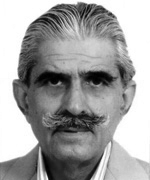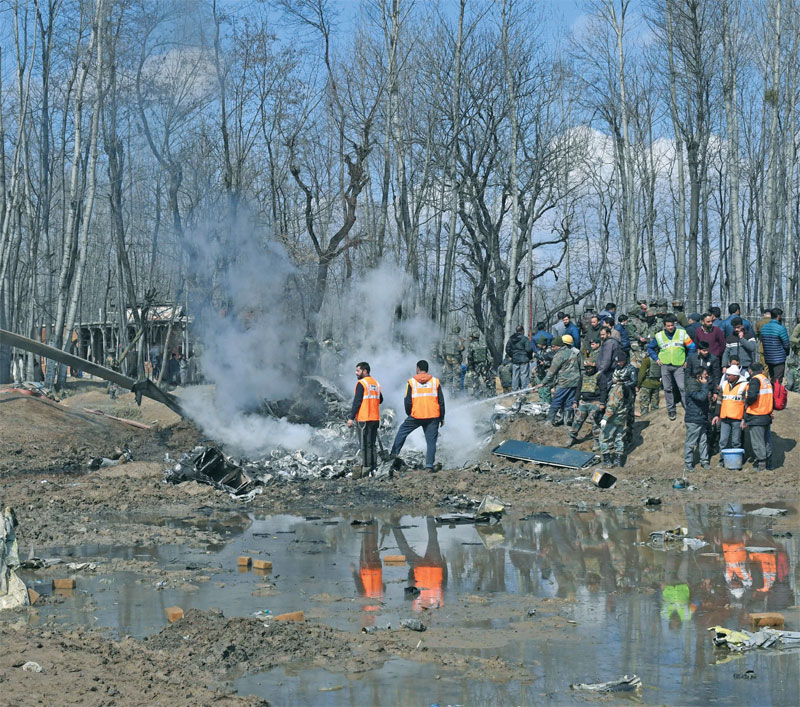Only time will tell whether the Balakot air strikes were a gamechanger or not
 Maj. Gen. Ashok K. Mehta (retd)
Maj. Gen. Ashok K. Mehta (retd)
One year after the air strikes, ones that breached the red line, bravado, and not sobriety, was on display. The government ensured the commemoration was a clear signal to Pakistan on its proxy war. Defence minister Rajnath Singh said, “Our response was out-of-the-box with the doctrine having been rewritten that will make adversary think 100 times before any misadventure”.
Chief of Air Staff (CAS), Air Chief Marshal RKS Bhadauria, said, “The Indian Air Force (IAF) has redefined use of air power, changed paradigm of sub-conventional action and response in the subcontinent”, adding, “It is possible now to take out targets below conventional war threshold, previously considered unviable by using the IAF and still having escalation control.”
Uncanny that a few days later, Chief of Army Staff (COAS) Gen. M.M. Naravane endorsed precisely this view at a special army event greenlighting retention of escalation control. But elsewhere in an interview to a newspaper, Bhadauria singled out the airstrike as the ‘most significant air action by the IAF in four decades’, completely ignoring the IAF’s stellar contribution to Indian Peace-Keeping Force (IPKF) in Sri Lanka and in the 1999 Kargil conflict.
This bold turnaround from embarrassing strategic restraint at the time of attacks on Parliament and Mumbai to tough and courageous response with the IAF to taking out Jaish-e-Mohammad (JeM) training camps in Balakot, two steps up the escalation ladder was facilitated by resounding strategic surprise. Former CAS, Air Chief Marshal S. Krishnaswamy explained the transformation like this: “In the past, the IAF neither always had the coordinates of terrorist targets nor the precision weapons to take them out. Both these capabilities materialised during the advent of the Modi government.” Former National Security Advisor (NSA) MK Narayanan would say that our forces did not have the requisite capability to take out targets without risking collateral damage and escalation. Bhadauria said: “The IAF carried out deep penetration precision attacks and returned unchallenged.” But the gamechanger was strategic surprise.

Whether Target Was Hit at Balakot
The jury has been out on this since after the strikes. The credibility of the air strikes has not been conclusively established except by the words of two chiefs of air staff – ACM Dhanoa and ACM Bhadauria. Soon after the air strikes, India’s leading strategic thinker, Ashley Tellis, now with Carnegie Endowment, wrote a detailed analysis of Balakot where he clearly expressed misgivings about the accuracy of the air operation.
At the annual Military Literature Festival at Chandigarh in December 2019, an unintended spat occurred over Balakot involving the redoubtable Christine Fair of Georgetown University, a persistent advocate of India calling Pakistan’s nuclear bluff in proxy war and Flt Lt Samir Joshi a former Mirage fighter pilot and now researcher of air power. Fair insisted ‘you did not hit the target’ and added fuel to fire by saying ‘next day, you got whacked’. There were others too abroad and in India who articulated doubts on the effectiveness of the air strikes.
The British expert on the Pakistan Air Force (PAF), Alan Warnes, in his article in the Air Force Magazine, wrote: “With stand-off range of 600km, Mirage 2000 fighters armed with Spice 2000 missiles in autonomous GPS mode did not need to cross Line of Control (LC). The bombs were aimed at a religious boarding school housing 200 students between 8- 15 years age. The bombs hit a wooded area a few hundred metres away, overshooting their targets. Next day, European Space Imagery published high resolution pictures showing buildings undamaged and no sign of casualties. ESI director, Adrian Zevenbergen, said there were no signs of casualties. The IAF, on the other hand, said four buildings were damaged but showed no images to support the claim. At the Paris Air Show in June 2019, Rafale marketing team showed AFM photocopies of high-resolution satellite images showing three holes in roof of one of the buildings. When one of the Rafale representatives was asked, if it could have been photoshopped, he replied: ‘I don’t think so, but who knows’.”
During the first anniversary of Balakot, ACM Bhadauria emphatically confirmed hitting the target. “Absolutely no doubt, we hit our target and achieved our objectives and the adversary knows it”. ACM Dhanoa, in an interview to the Hindustan Times (11 February 2020), said there is conclusive proof that the JeM training camp strikes were a military success. “It was not just a seminary but a training camp. We hit at 3.30 am while terrorists were still in bed… they say Fajr namaz at 4 am. We hit with five stand-off (Spice 2000 missiles) weapons. The sixth missile did not fire.” Group Captain Murli Menon (retd) has questioned the accuracy evidence of Spice 2000, whether it was weapon malfunctioning or pilot error in targeting as missiles apparently missed the target intended. Crystal Maze 142 M missile did not fire, thereby denying mission of Battle Damage Assessment (The Tribune 14 February 2020).
You must be logged in to view this content.

